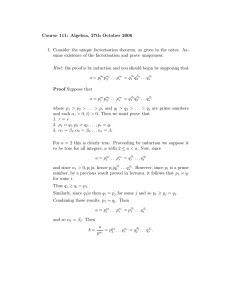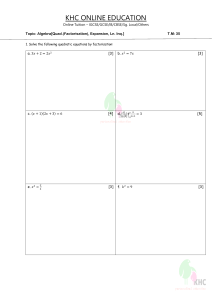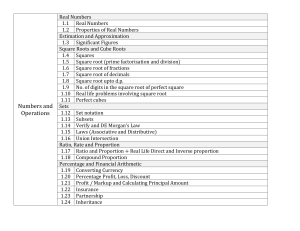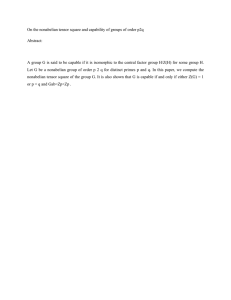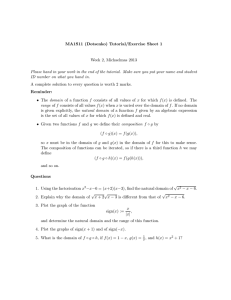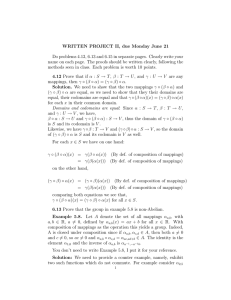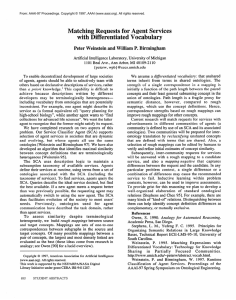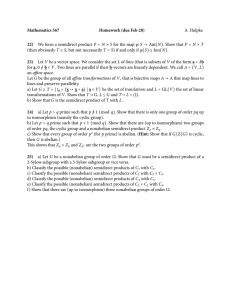Course 111: Algebra, 27th October 2006
advertisement
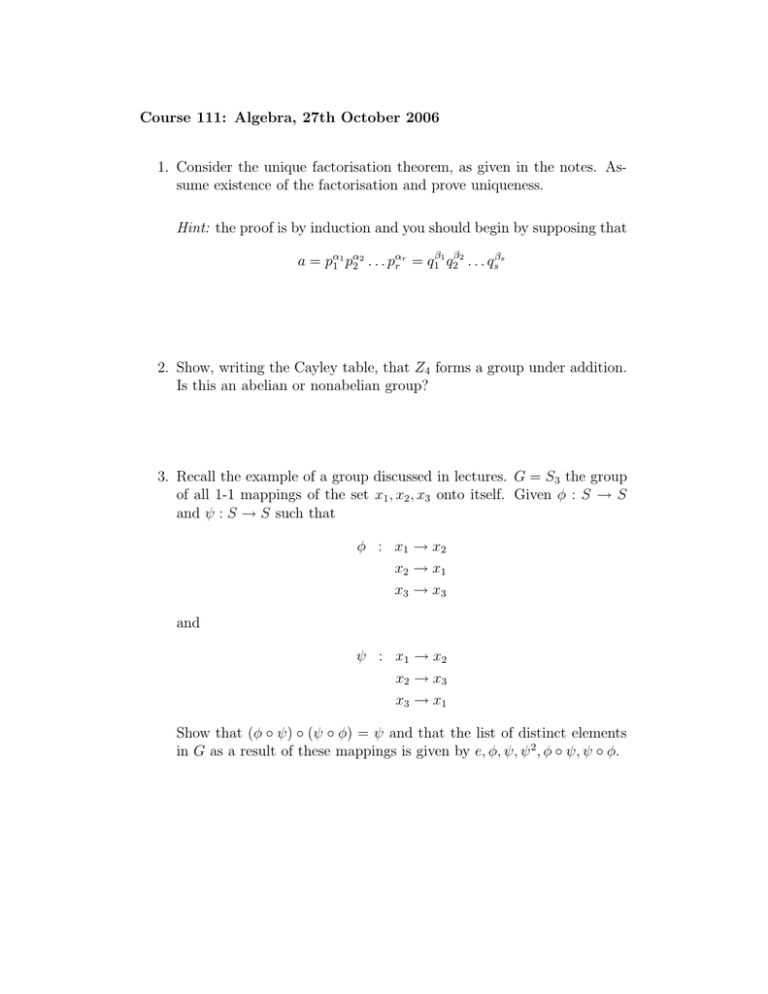
Course 111: Algebra, 27th October 2006 1. Consider the unique factorisation theorem, as given in the notes. Assume existence of the factorisation and prove uniqueness. Hint: the proof is by induction and you should begin by supposing that a = pα1 1 pα2 2 . . . pαr r = q1β1 q2β2 . . . qsβs 2. Show, writing the Cayley table, that Z4 forms a group under addition. Is this an abelian or nonabelian group? 3. Recall the example of a group discussed in lectures. G = S3 the group of all 1-1 mappings of the set x1 , x2 , x3 onto itself. Given φ : S → S and ψ : S → S such that φ : x1 → x 2 x2 → x 1 x3 → x 3 and ψ : x1 → x 2 x2 → x 3 x3 → x 1 Show that (φ ◦ ψ) ◦ (ψ ◦ φ) = ψ and that the list of distinct elements in G as a result of these mappings is given by e, φ, ψ, ψ 2 , φ ◦ ψ, ψ ◦ φ.
